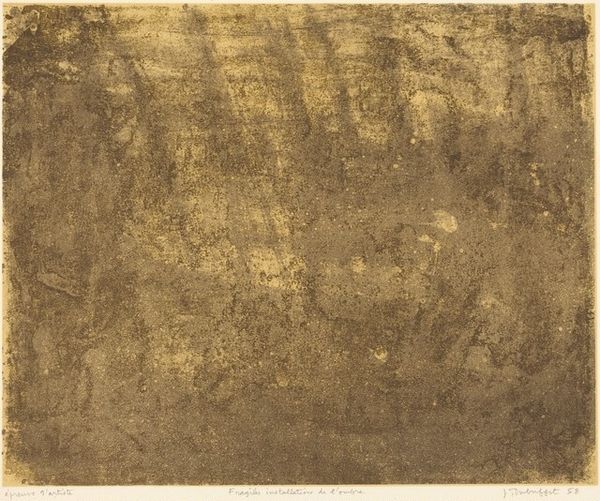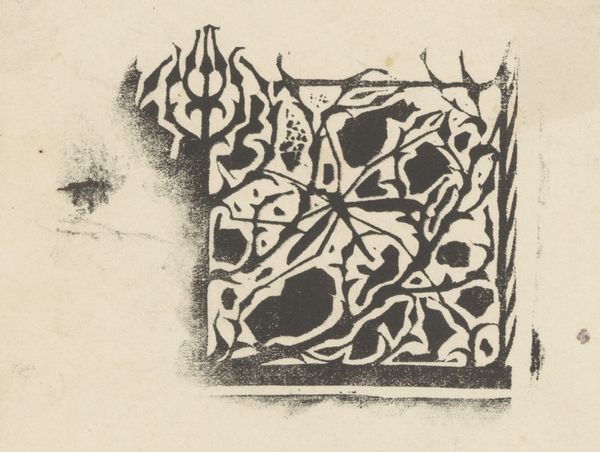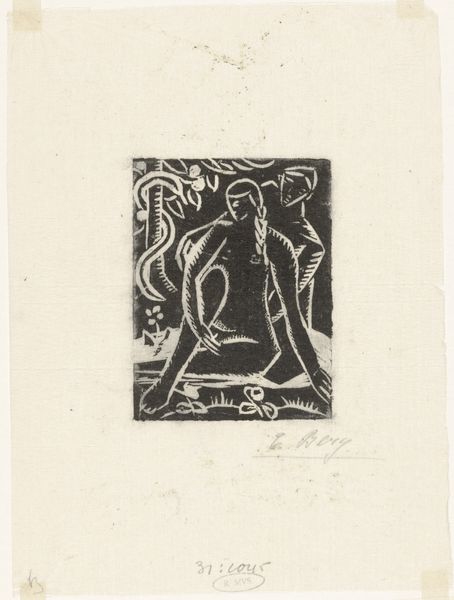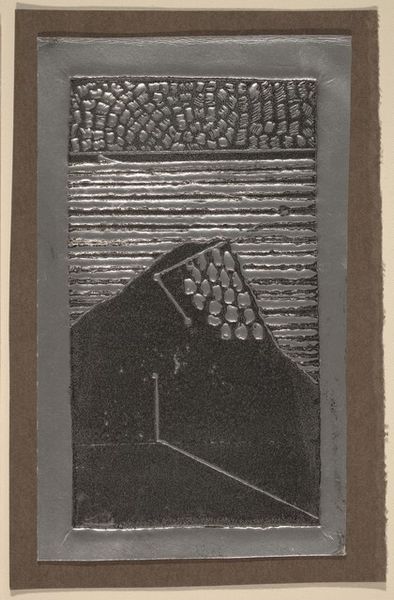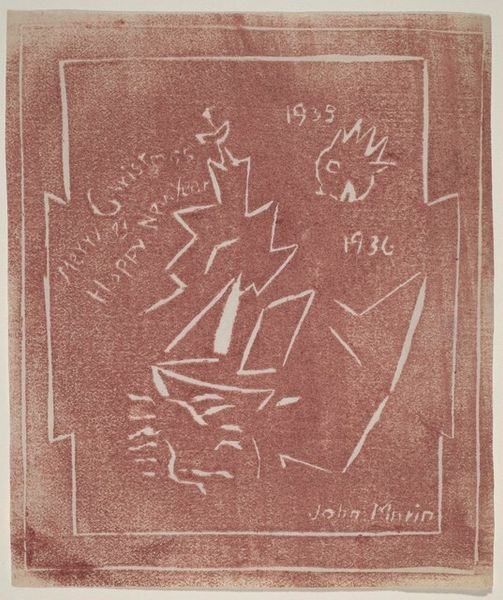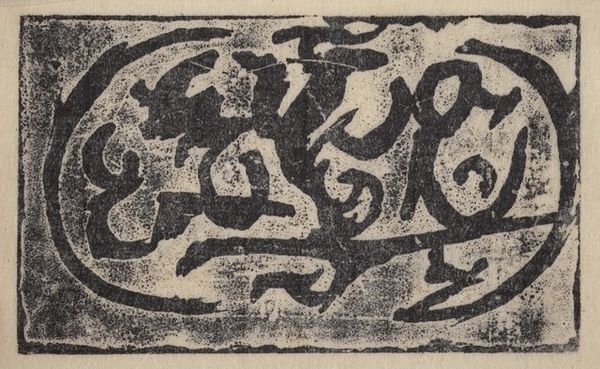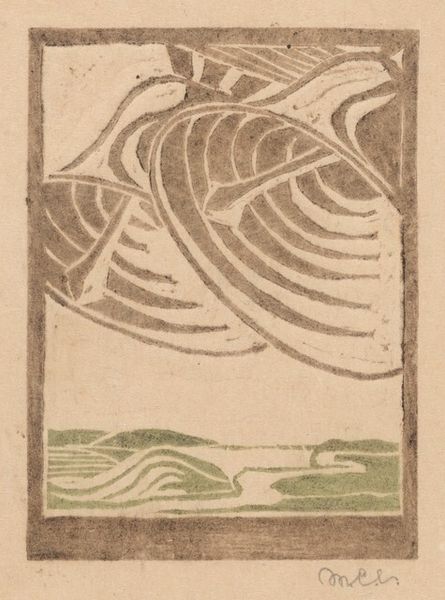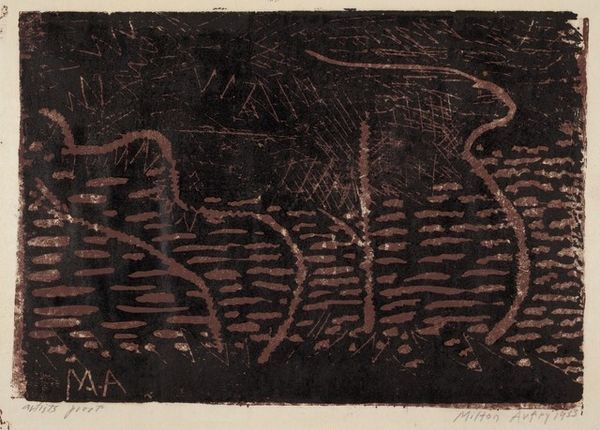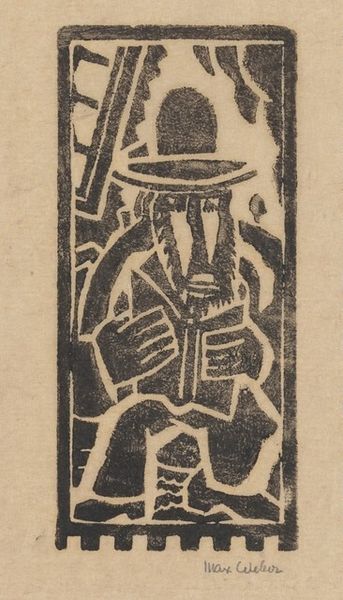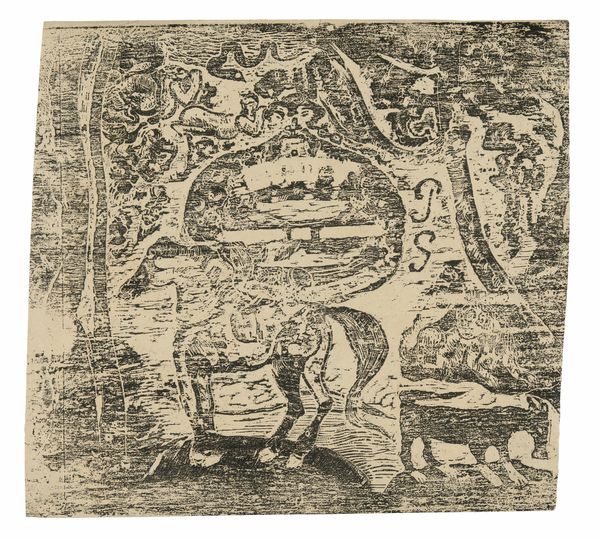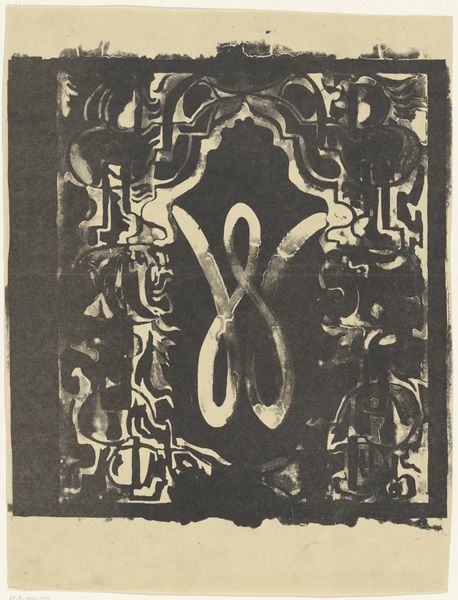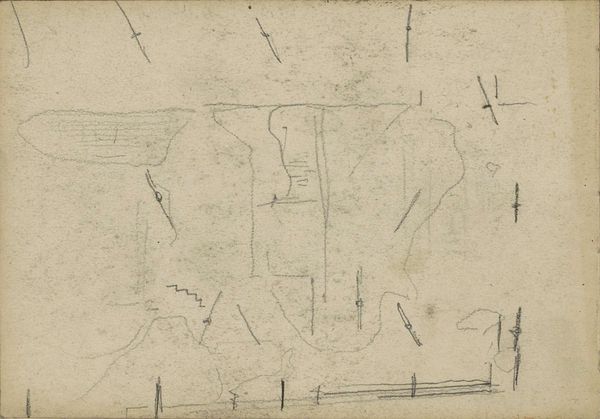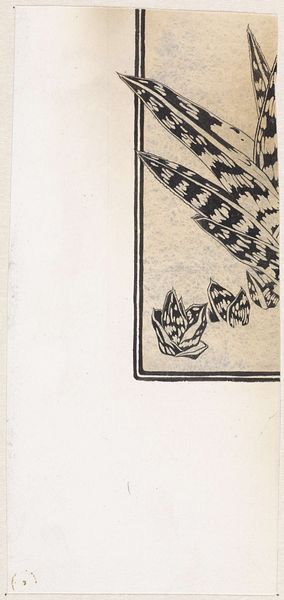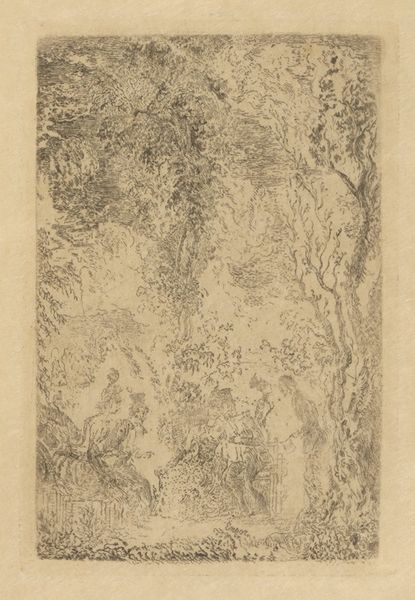
print, woodcut
#
narrative-art
# print
#
figuration
#
expressionism
#
woodcut
Dimensions: overall: 24.3 × 29.8 × 1.1 cm (9 9/16 × 11 3/4 × 7/16 in.)
Copyright: National Gallery of Art: CC0 1.0
Curator: The album we're examining, titled "Die Träumenden Knaben," or "The Dreaming Boys," was produced by Oskar Kokoschka around 1908. It showcases a series of woodcut prints. What’s your initial take on it? Editor: Well, it's striking. The stark contrast of the woodcut gives it an immediate sense of drama and also something… primitive. There’s a rawness in the lines, a kind of desperate energy, I think, especially looking at the central image here, three very stark figures standing upon what seems to be a sort of alligator or large fish. Curator: Absolutely, Kokoschka was a key figure in Expressionism, a movement deeply concerned with conveying intense emotion and psychological states. And here we have some clear early expressionist tendencies, even if its narrative is still up for interpretation. How do you see that connecting to the work's materiality? Editor: It's crucial. The choice of woodcut is telling. It's not refined; it's laborious. Think about the artist physically carving the wood to express his inner turmoil. The limited palette focuses on the tension of creation itself – that tactile struggle against the material directly mirroring the psychological tension he's depicting. I’m seeing production and emotion tied inextricably together, no fine art refinement here. Curator: It’s a perfect reflection, and this relates too to its social function. Consider who could afford or engage with such artwork, the circles that promoted expressionism, its relationship with other forms of media. The way we value the object and place it inside a museum reflects how cultural worth gets defined. Editor: The book form is important, too. It suggests intimacy, like sharing secrets. You wouldn’t usually expect the kind of violent, raw emotion typically to be delivered with such delicacy and fragility in book-making, though I think, in this instance, it really works. The physical act of holding and revealing its content gives an active, engaging role to the viewer. Curator: It’s hard to disagree, I find it just an object which opens an inquiry into both personal and broader emotional issues. A tangible link that encourages an assessment of what defines experience. Editor: Yes. For me, this work exposes the raw, very visceral underpinnings of creating art, while at the same time also giving that unique touch-and-feel component, with an experience which has its place within material.
Comments
No comments
Be the first to comment and join the conversation on the ultimate creative platform.
